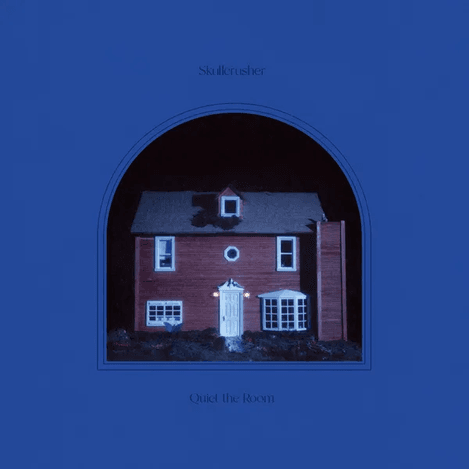On Quiet the Room, Skullcrusher’s bait-and-switch folk spellbinds
"Quiet The Room"

Skullcrusher conveys newfound confidence on her debut full-length. Dreamy and deeply mysterious, it's less that you listen to Quiet the Room than you grow accustomed to its enigmatic rhythms.
Across two tone-setting EPs in as many years, Skullcrusher (the project of Helen Ballentine) merged gothic Americana with the stylings of Nick Drake to intriguing effect. In a market not exactly lacking for ruminative indie-folk, I wondered how Ballentine could distinguish herself from the other skeleton-forward Californian writing ghostly guitar music. The songs themselves were pleasant but decidedly small, her gossamer voice so nimble you felt she could disappear into thin air.
Her new album, with Big Thief producer Andrew Sarlo on board, represents a scaling of ambition. In comparison to those earlier releases, Quiet the Room feels massive, closer to the weather-beaten wilderness music of Grouper or The Microphones than, say, Julien Baker. Informed by childhood memories of her parents’ separation, Ballentine appropriately positions her voice as a small part in a larger shifting tapestry. On “Lullaby in February,” after four laconic verses, her vocal is overtaken by a monolith of noise that feels like it’s emanating from the earth’s core. “Whatever Fits Together” sketches a traumatic moment: “I left home in the summer / I cried in the stairway / When I hugged my brother,” yet the perky guitar melody and multi-tracked vocals suggest a recollection mulled over and accepted. Like an unearthed photo left to fade in an attic, the album’s images retain a vivid sense-memory in spite of the disintegration surrounding them.
Quiet the Room is not all introspective musing: Ballentine has jokingly referred to all of her songs needing an ‘Avicii moment’, and this is audible in the textural, almost clubby push and pull of her songwriting, prone to unexpected transformations or abrupt disappearances. Heaving strings and lapping waves form the background of “Building a Swing,” only to evaporate halfway through, Ballentine’s unadorned voice emerging like a clearing in the forest. “Could it be the way I look at everything?” simply repeats its titular question twice against plaintive guitar – it goes unanswered, over after 40 seconds. “Window Somewhere,” is among the album’s best, and introduces a pounding drum near the climax that gives the song a startling but not-unwelcome techno flavour. Appropriate for an artist who shares a name with a medieval torture device, the album’s timbre leans more earthly than immaterial.
At its least engaging, notably the cloying, end-of-credits title track, the grandeur of Quiet the Room can feel vague and derivative, like Cocteau Twins for the cottagecore crowd. It undoubtedly benefits from a full-length listen, and even then, I sometimes yearned for more of a defined statement amidst the foggy expanse. But at its most rewarding, Ballentine conjures moments of striking beauty and emotional resonance that make Quiet the Room a worthy undertaking.
Get the Best Fit take on the week in music direct to your inbox every Friday

Lorde
Virgin

OSKA
Refined Believer

Tropical F*ck Storm
Fairyland Codex





